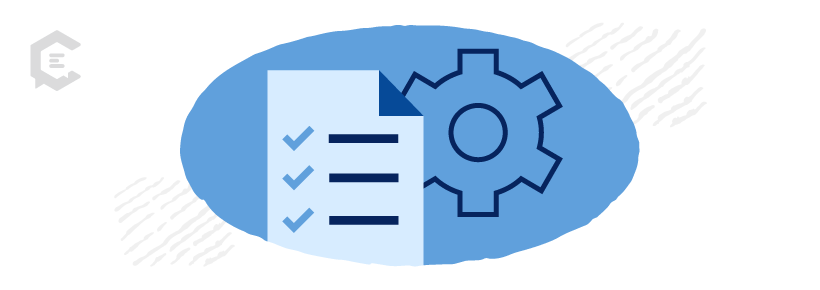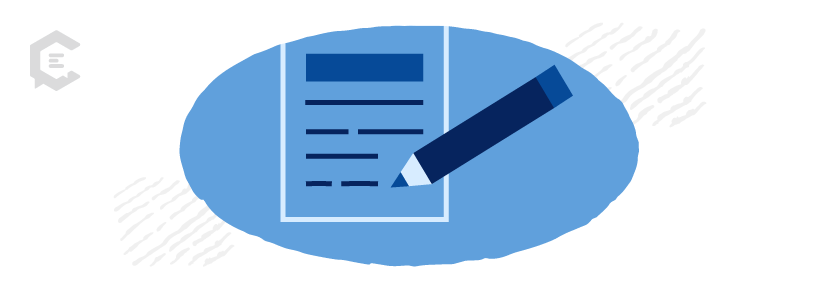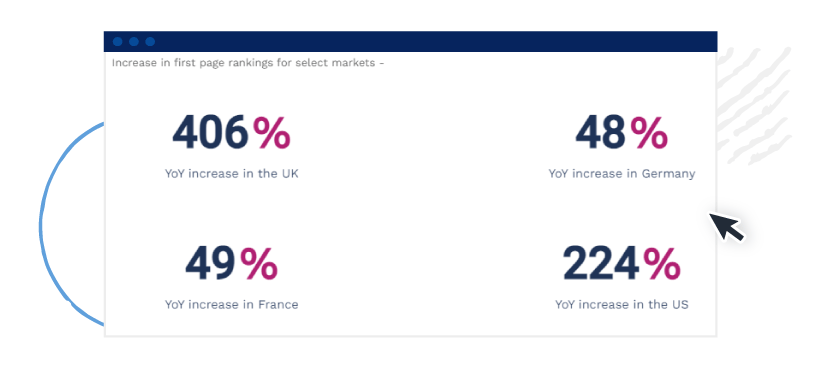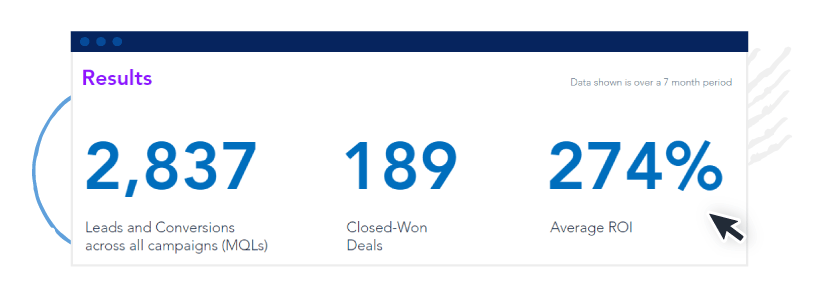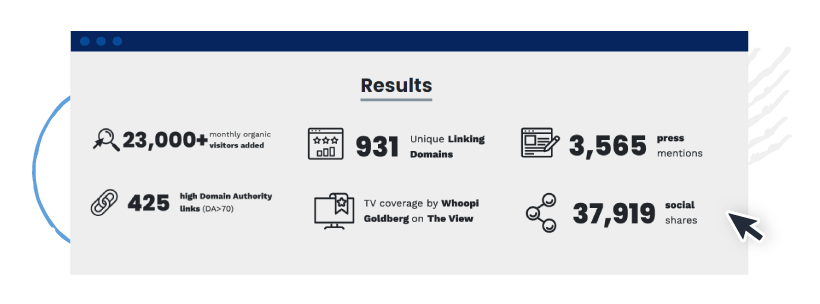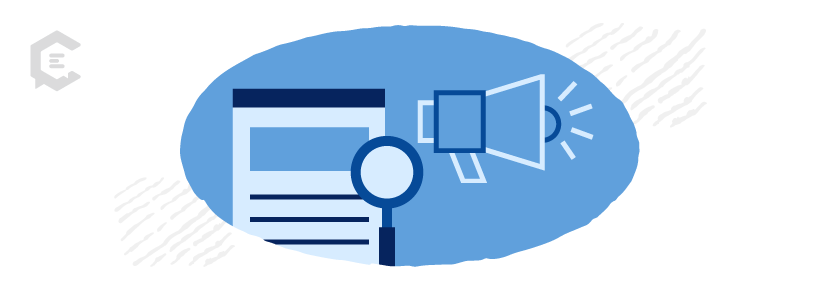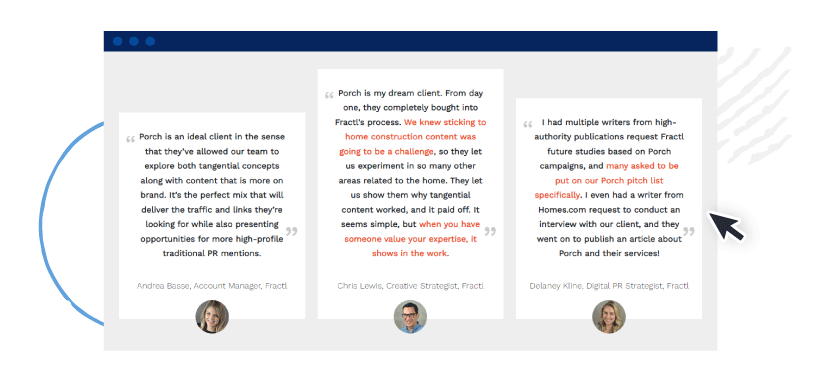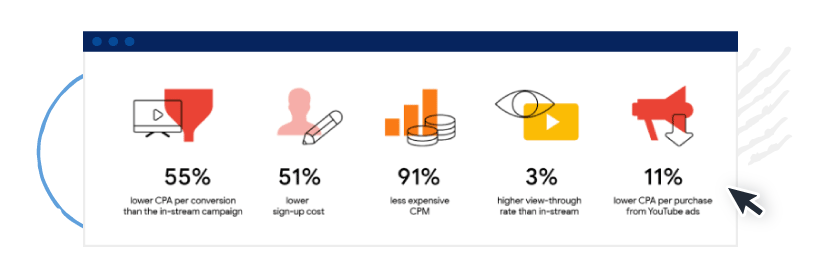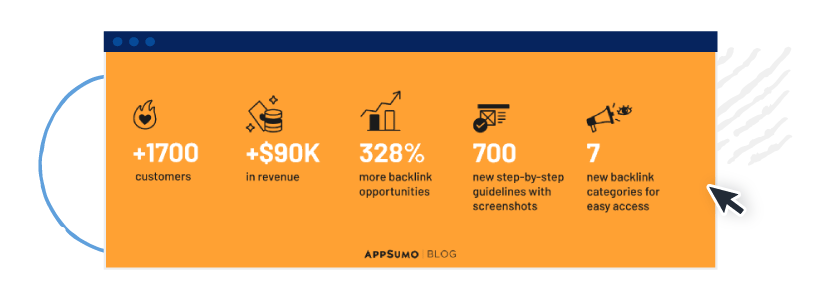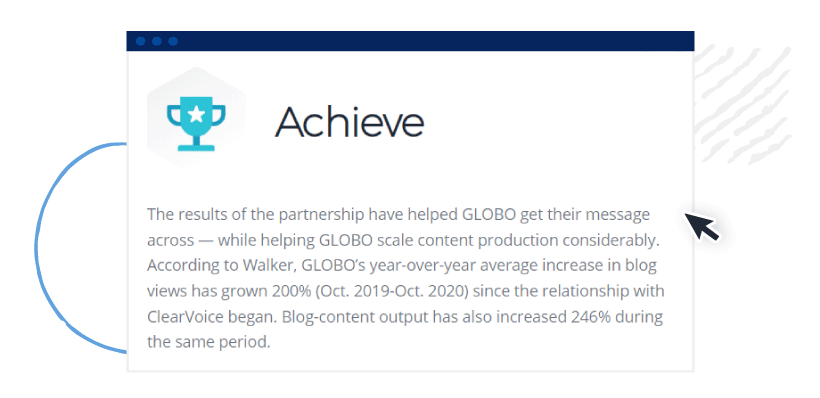Case studies close deals.
They’ve been a staple of the marketing world since John Deere first launched “The Furrow” in 1895, even if no one called them that at the time. Got a problem? We have a solution. Let us tell you about it.
Sure, marketing has evolved since then — but human nature? Perhaps not so much. We are still a “prove it” society, especially when it comes to spending our money. Case studies are proof that your product or service works.
What makes a good B2B case study? How do you create one? This guide breaks the process into three easy-to-follow phases to help you create the perfect B2B case study for your business.
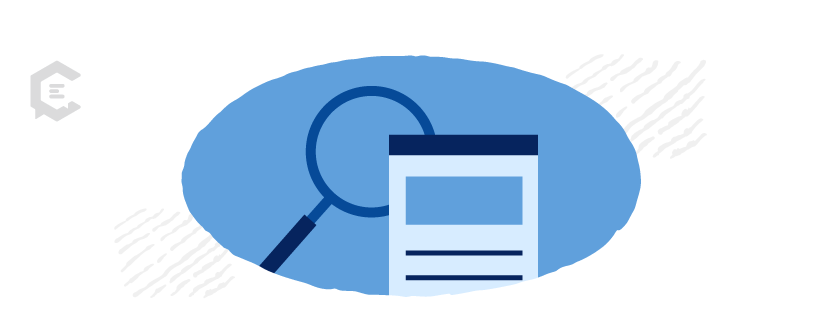
What is a case study?
A case study is a sales and marketing tool. It’s a type of report in which Company A tells the story of their successful partnership with Client B. Case studies follows this format:
- Challenge. What business problem was Client B having? What stood in their way of reaching a business goal?
- Solution. Highlight the solution your brand provided.
- Results. Demonstrate success with metrics.
Case studies are also known as “customer stories” or “success stories”. Design-wise, they run from quick one-sheeters to fully designed PDFs.
Learn More: What Is a Customer Story?
Why are B2B case studies important?
Case studies provide sales prospects with proof that your product or service can help them solve their business challenges and meet their goals.
B2B sales cycles are typically long and complicated, and the product or service in question is usually costly. In a recent Gartner survey, 77% of B2B buyers said their latest purchase was “very complex or difficult.”
In B2B sales, you’re trying to influence an entire group of decision-makers rather than a single consumer, which complicates the process. The same Gartner survey found that there are 6 to 10 people involved in the decision to purchase a complex B2B solution.
Now consider how these decision makers are gathering information about you and your competitors.
- They’re online, of course. According to Zippia, 67% of the B2B buyer’s journey is done digitally, and more than half of prospects rely on helpful content (such as case studies) for their research. Gartner predicts that by 2025, 80% of B2B sales interactions will occur on digital channels.
- They’re looking on social. No surprises here either. Seventy-five percent of B2B buyers and 84% of C-level executives use social media to research purchase decisions, according to an IDC report.
- They want you to help them with their decision. According to Gartner, when prospects believed that vendors were providing them with helpful information, they were 2.8 times more likely to experience a high degree of purchase ease and 3 times more likely to buy a bigger deal with less regret.
Following up a pitch with a case study (or two or three) is part of the proof-providing and relationship-building processes that lead to large B2B purchases.
Master B2B Case Studies in 3 Steps with our in-depth guide!
How do case studies fit into your overall digital marketing strategy?
You need content for all stages of your funnel. Case studies are decision-level content for your buyer’s journey. They demonstrate the value of your product or service and showcase your company as an innovator and problem-solver.
What’s the difference between ebooks, case studies, and white papers?
While each of these is (typically) long-form content (1,000+ words… ish), their goals are slightly different.
Ebooks are deep dives into a certain topic. The subject matter warrants more pomp and circumstance than a typical blog post provides. These might be gated (“gated” means the content in question is held behind a form-fill and the user must give you their email address to access your content).
Case studies, also known as customer stories, use a “challenge/solution/results” format to demonstrate how a product or service helped a client. Don’t gate these. Case studies are decision-level content that help prospects make a purchasing decision. They should be able to access your case study with ease.
White papers are more formal pieces of thought leadership in which a company explains a trend or makes predictions. Claims are backed by reputable and primarily academic sources. Again, no gating. Make it easy for users to access your white papers.
Learn More: Understanding Case Studies, eBooks, and White Papers
How to write a B2B case study in 3 phases
When you’re staring at the metaphorical blank page, the process of putting a case study together seems overwhelming. It’s detailed, for sure, but we’ve broken it down into three phases, each comprising several steps. Follow our process to create a stellar B2B case study.
Phase 1: Prep
Step 1. Decide on the customer’s story
There are two things to consider when figuring out a customer story to feature:
- What are your prospects struggling with? What are their common pain points?
- Compare that with your most successful client relationships. Whom did you recently help? Remember — they need to have remarkable results you can showcase, too.
Keep in mind: Case studies are more effective when you name the client you helped. Unfortunately, for various reasons, sometimes a client won’t let you use their name, forcing you to do something like, “We helped a client in the content marketing software space,” rather than, “We helped ClearVoice.” If you can, pick a client who agrees to be named and quoted (more on quotes below). It’s just a better experience all around.
Step 2. Gather your stakeholders
How many people you need to pull into your case study depends on the size and mechanics of your company. If you’re a one-person show and this is all on you, then advance to the next step. If you work in a larger operation, you’ll need input from:
- The client’s main point of contact at your company (likely an account manager)
- Anyone else who serviced the account
- A data analyst (or whoever handles data and metrics for this customer)
- The client and their stakeholders
- Any C-suite execs on both sides who have wonderful things to say about this relationship (for quotes)
These job titles may look different at your company. Tailor this step for what makes sense for you.
Step 3. Create a questionnaire
You can distribute the questionnaire via email or use it to guide a real-life conversation. It doubles as an outline for your case study, too.
Ask the client:
- What business challenge were you experiencing?
- Have you tried to solve this problem before? What were the results?
- What solution(s) did we offer?
- How did we stand out from our competitors?
- How was the implementation phase of our product or service?
- How has our product or service helped?
- Did we meet your expectations?
- Please demonstrate success with key performance indicators (KPIs).
Ask your team:
- What were your initial thoughts when you first talked to the client and heard their challenge?
- What solution did we offer? What were your goals with our solution?
- How did the implementation phase of our product or service go?
- Did we meet the client’s expectations?
- How has our product or service helped this client?
- Please demonstrate success with key performance indicators (KPIs).
When you send the questionnaire or hold the meeting, make sure the client and higher-ups know that you need a quote that speaks to the partnership’s success.
Step 4. Set tasks and timelines
Send out your questionnaire and/or schedule your meeting to discuss the above. Make sure everyone knows what they’re tasked with and their due dates.
Once you’ve received everyone’s input, it’s time to move to Phase 2.
Phase 2: Write
We know you’re intimidated by the “W” word, but don’t be. As mentioned earlier, case studies all follow this basic format:
- Challenge
- Solution
- Results
This alleviates the need for you to come up with anything super special here. Just follow this basic outline for your B2B case study:
1. Introduce the client
Give some background about their situation. How long have they been in business? How many employees do they have? Where are their headquarters?
2. Present their challenge
Spend a few paragraphs detailing the client’s problem before using your product or service. What goals were they trying to achieve, and what was standing in their way?
3. Share your solution
In two to three paragraphs, tell us how your product or solution helped solve the client’s problem. Explain why the client chose you and how doing so improved business for them. Keep the focus on the client and their success.
4. Show results
This is the proof/pudding step. Show how your solution led to tangible results. Give us metrics. Here are three examples from various B2B case studies:
5. Include quotes and visuals
These elements add personality and credibility to your study. Find a few nuggets that speak to the success of the relationship and feature them prominently. Graphs, charts, and individual data points make for good custom graphics that can liven up your case study. As you flesh out the story, think about which data points would make for good custom graphics. Call these out in a comment for your designer.
6. Don’t forget the call to action
Every piece of content needs a CTA. Tell the reader what to do next. Seeing as case studies are usually consumed farther down in the customer journey (i.e., mid-to-bottom level of the funnel), go with a CTA that’s appropriate for that stage. A few that might make sense for you:
- Start your free trial
- Book a demo
- Talk to us
- Get started
7. Send your case study for review
Once you’ve written, edited, proofread, and agonized over your work, it’s time to send your draft for review. Make sure every stakeholder has a chance to comment on the content. It’s not unusual for it to take several rounds before all the wrinkles are ironed out. Once you have the final version that everyone’s happy with, it can go to design.
Phase 3: Promote
Unfortunately, you can’t just publish your case study to your site and watch the leads roll in. Phase 3 is about promoting your case study.
Promote it on your site, blog, and social
If you don’t have a dedicated case studies page on your site, consider adding one. Seasoned B2B buyers know to head straight there for real use cases. At ClearVoice, our case studies (we call them “customer stories”) can be found in the top navigation bar:
Pull some of the quotes from the case study and sprinkle them throughout your site, especially on relevant product pages. These serve as testimonials. Design them into quote cards, and you can post them on social (if you don’t have a graphic designer, try a tool like Canva or Snappa to create these yourself).
Promote your case study on your blog and on your social channels. To better resonate with your target audience, make sure to call out the common pain point and the solution in your leads and posts. Tag your client and link back to the case study.
Don’t forget to follow your social channels closely after you post. The more chatter your post gets, the better visibility it receives.
Include them in a relevant email campaign
Case studies are excellent content for an email nurture campaign. According to the Content Marketing Institute, 81% of B2B marketers say email is their most used form of content marketing. They’re also a good way to reconnect with a prospect who has gone cold.
Make sure your sales team has them
We’ve never met a sales team that didn’t love a good case study. Some have even been known to (brace yourself) print them and take them to trade shows, meetings, etc. Marketer Neil Patel says he used case studies to increase his deal closing ratio by 70% and his sales by a whopping 185%.
Include them in pitches and proposals
Always include at least one relevant case study (two or three is better, but no more) with your pitches, proposals, follow-up sales emails, etc. As stakeholders continue to hear pitches and research solutions, your case study is social proof that yours works.
Master B2B Case Studies in 3 Steps with our in-depth guide!
5 case study examples we like
1. Fractl and Porch.com
This case study is called How Fractl Earned Links from 931 Unique Domains for Porch.com in a Single Year. It’s an excellent example of the power of bold graphics and clean design. Note how clean the client quotes look.
2. Think With Google and SEMRush
How to promote a complex product on YouTube: Inside one company’s winning strategy. This case study from the SEO tool SEMRush is fairly long at almost 1,300 words—and that’s OK. Don’t shy away from complicated topics that need more space to explain.
3. AppSumo and SEO Buddy
How SEO Buddy Made $90K Through 1,700 Customers Found on AppSumo. This case study does an excellent job of boiling key points down to digestible pieces while maintaining visual integrity.
4. FormAssembly and UtmostU
Nonprofit Organization Reduces Manual Work by 50% with FormAssembly’s Data Collection Platform. Who doesn’t want to reduce their workload by 50%!? This case study puts the value proposition right in the headline, and it works beautifully.
5. ClearVoice and GLOBO
Helping a Language-Services Provider Become a Greater Force for Good. Oh look, ClearVoice made the list All of our customer success stories follow the same format and are about the same length. This standardizes the research process for prospects, who can easily find the information they need as they tab through our studies.
Get Help Creating Your Next B2B Case Study
ClearVoice partners with hundreds of talented and vetted content writers and strategists who can create the B2B case study you need for your industry. Reach out to a ClearVoice content pro today.

